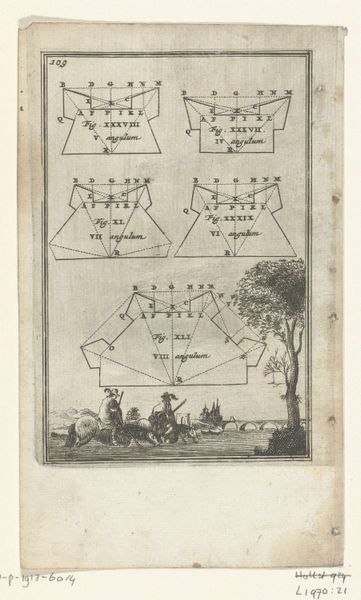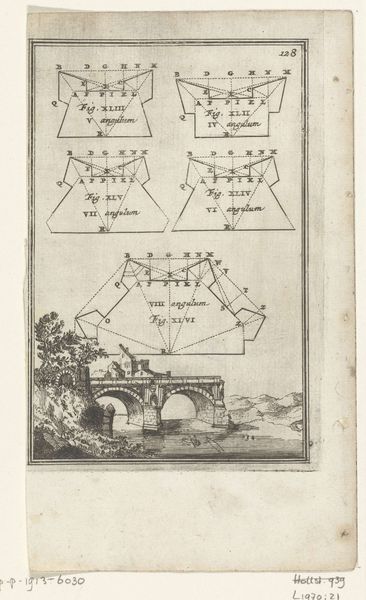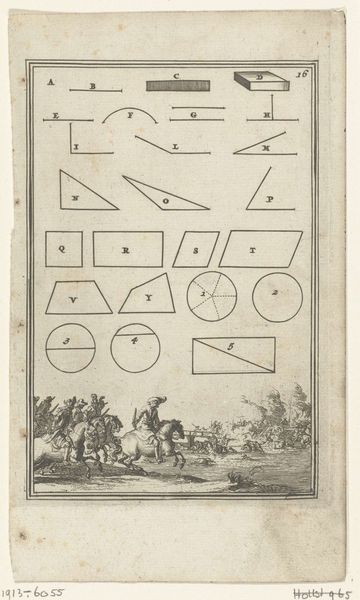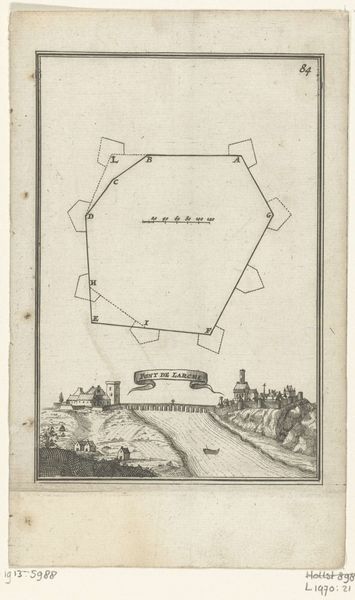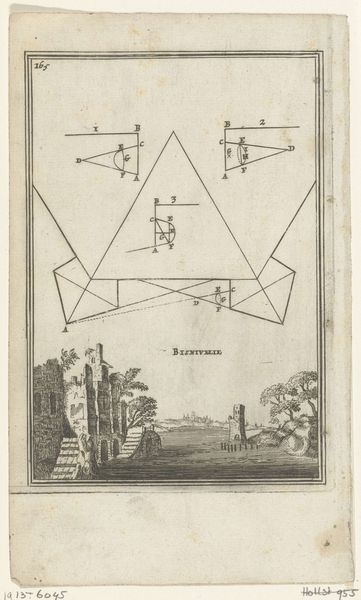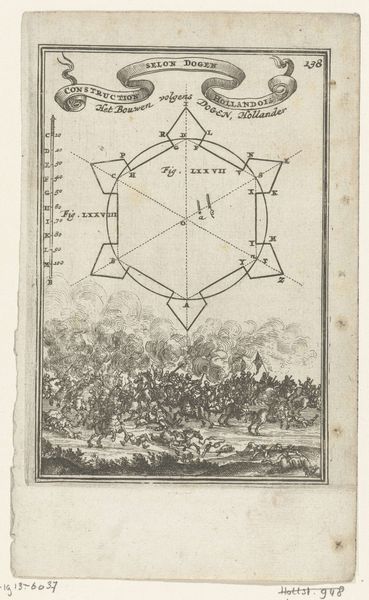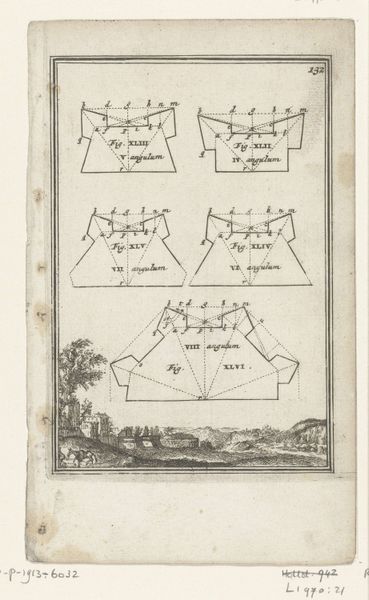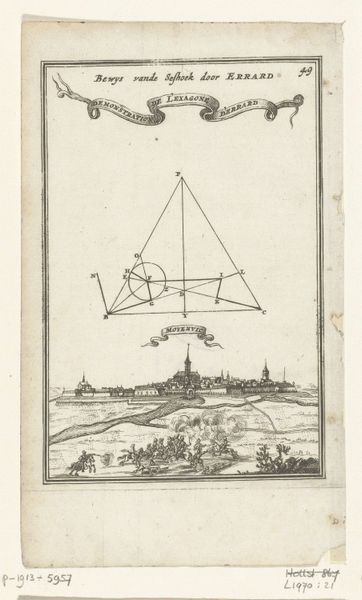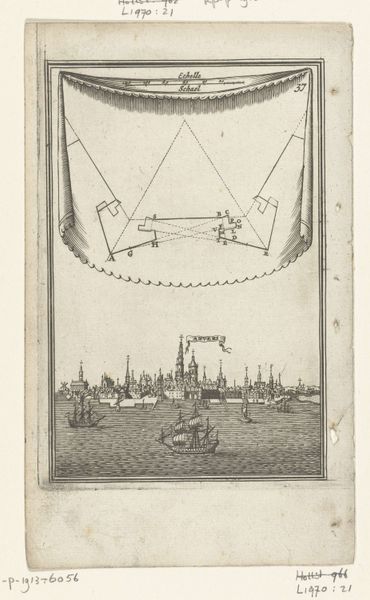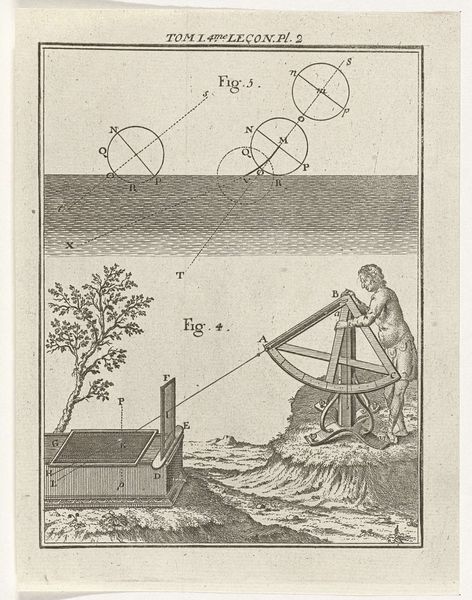
Illustratie voor 'Den Arbeid van Mars' van Allain Manesson Mallet 1672
0:00
0:00
drawing, print, paper, ink, engraving
#
drawing
#
baroque
# print
#
figuration
#
paper
#
ink
#
engraving
Dimensions: height 185 mm, width 113 mm
Copyright: Rijks Museum: Open Domain
Curator: Welcome. Before us, we have "Illustration for 'The Work of Mars' by Allain Manesson Mallet," crafted by Romeyn de Hooghe around 1672. It’s a composite piece, combining drawing and engraving, using ink on paper. What are your first thoughts? Editor: I'm immediately struck by the juxtaposition. We have what appears to be a fortress rendered realistically at the bottom, juxtaposed against the rather abstract geometric shapes above, like blueprints. Curator: Precisely! It shows de Hooghe's process explicitly, revealing the connection between theoretical geometry and its material application. Those diagrams illustrate methods for calculating the angles of fortification walls—directly informing the construction visible in the lower register. Editor: So it’s about visualizing knowledge and technique. Thinking about the context, I am keen to better understand Mallet's book. What did it contribute to the cultural moment? Curator: Manesson Mallet's 'Les Travaux de Mars' aimed to educate a wider audience about military engineering during a period of intense geopolitical competition in Europe. De Hooghe’s images in the volume not only illustrated techniques, but glorified the image of Dutch military and engineering prowess. Editor: It makes you consider the labour involved—the craftsmanship of both the engineer and the artist. The repetitive, precise work implied in rendering those geometric shapes must have been very labor-intensive, but the material reality of warfare even more so. Curator: Exactly. It’s a very hands-on visualization of the art of war. De Hooghe has managed to blend seemingly disparate worlds—practical labor, intellectual calculation, and societal propaganda. Editor: It is truly intriguing how such a practical, technical illustration operates on a level of symbolic representation. There is a clear interplay of materials, production, power, and design. Curator: And that blend of design, theory, and tangible construction reveals much about the intellectual and military priorities of the late 17th century. It moves beyond aesthetics to show the relationship between knowledge, craft, and social ambition. Editor: Thanks for providing clarity about that nexus, which helps us appreciate the layered construction, intent and materiality of this artwork.
Comments
No comments
Be the first to comment and join the conversation on the ultimate creative platform.

